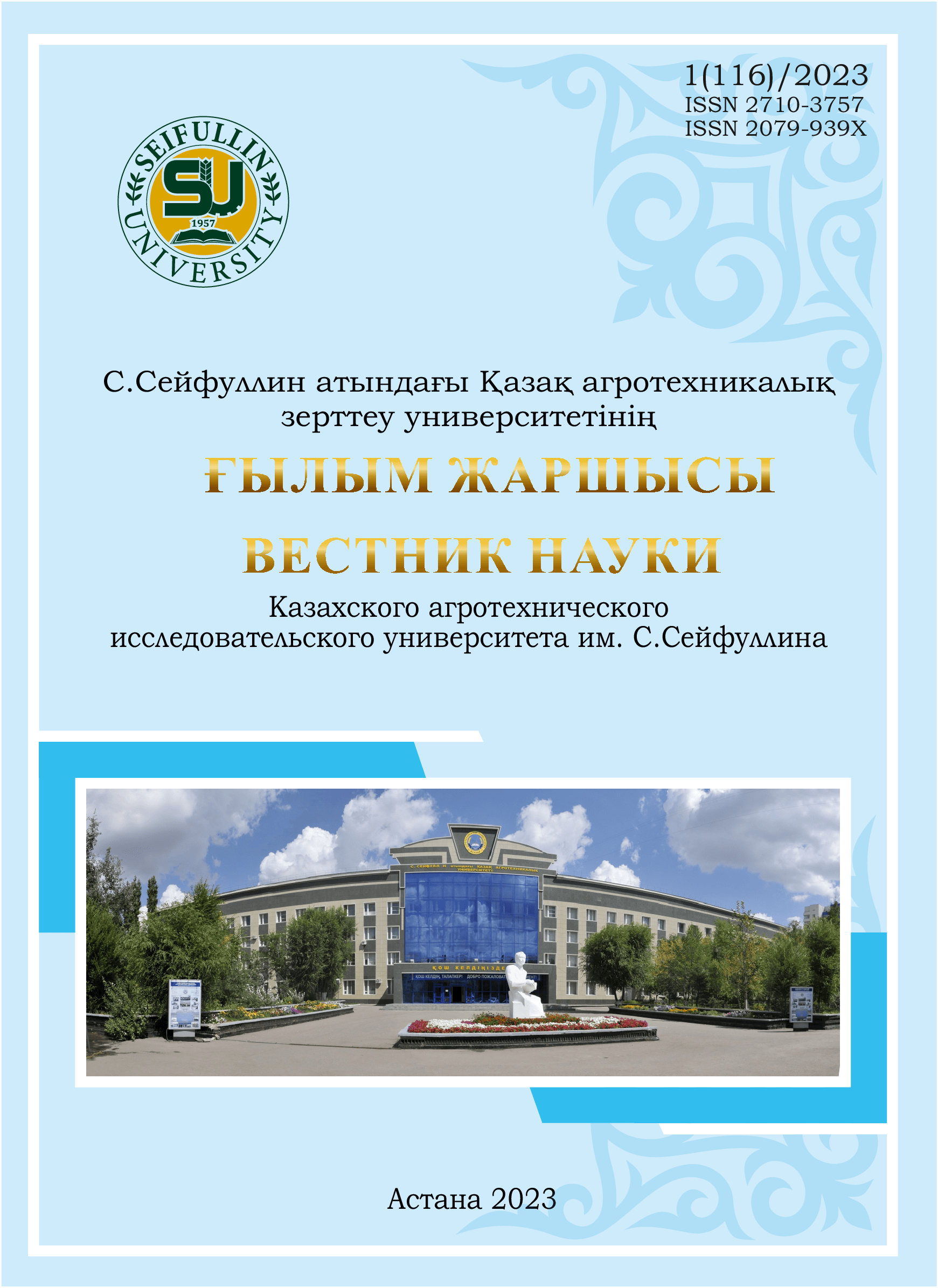THE INFLUENCE OF INSECT POLLINATORS ON THE PRODUCTIVITY OF THE MUSTARD VARIETY SAREPTSKAYA RUSHENA IN THE CLIMATE OF THE DRY STEPPE OF NORTHERN KAZAKHSTAN
DOI:
https://doi.org/10.51452/kazatu.2023.1(116).1338Keywords:
Mustard; entomophilic crops; honey plants; insect pollinators; bee pollination; brown mustard Rushen; oil-bearing.Abstract
Insect pollinators have a very important influence on the productivity of a number of entomophilic crops. Some of them owed their coexistence in nature to this type of insects because they are not able to form a crop at all without pollination by insects, while others will have a meager harvest. Therefore, aspects of the study impacting insect pollinators on the productivity of entomophilic crops in the North of Kazakhstan are of special significance. The influence of insect pollinators on grain productivity of mustard has not been studied in the region. Species composition of insect pollinators in the steppe zone of Northern Kazakhstan not studied. For the first time, as part of this study, the species composition of insect pollinators was studied in the North of Kazakhstan, and the number of visits to them during the flowering of mustard plants was studied. Studies have shown that the pollination of mustard plants by insect pollinators is a very effective technology in improving its grain productivity. The research was focused on permanent study area of S. Seifullin Kazakh Agro Technical University NCJSC (A.I. Barayev Research and Production Center for Grain Farming LLP, Nauchny village, Shortandy district, Akmola region). The permanent study area is located on the southern carbonate black earth. The object of the research was the variety of brown mustard Rushen. Mustard crops were planted on May 30 with a rate of 2.5 million germination seeds per hectare. Two options were studied in the experiment: one without pollination and the second with pollination of mustard plants by insect pollinators. In the experiment, more flowering mustard plants were pollinated by insect pollinator species such as the Honey Bee (Apis mellifera L.), the Flower Hoverflies (Myiatropa florea L.); the Common Wasp (Vespula vulgaris L.); and the Bumblebee (Agrous F). Other insect pollinator species showed low attendance of mustard plants during flowering. The greatest number of insect pollinators in the experiment was observed at lunchtime, but in the morning and evening the number of insect pollinators on the flowers of the brown mustard Rushen plant decreased significantly. The results of the research have shown that insect pollinators contribute to an increase in the yield of seeds of the variety of brown mustard Rushen up to 60%.

